
Sky Crystals – Photographing and Understanding Snowflakes
by Don Komarechka
April 7, 2018

Snow Castle
Winter had forever been a dull and dreary season for me, until I discovered the enigmatic beauty of snow on a very small scale. A single snowflake can contain a universe of detail, and they’re governed by a few simple rules of physics that generate an infinite variety of shapes. Photographing these skyborne gems has been a process taking thousands of hours of my time over the past decade.
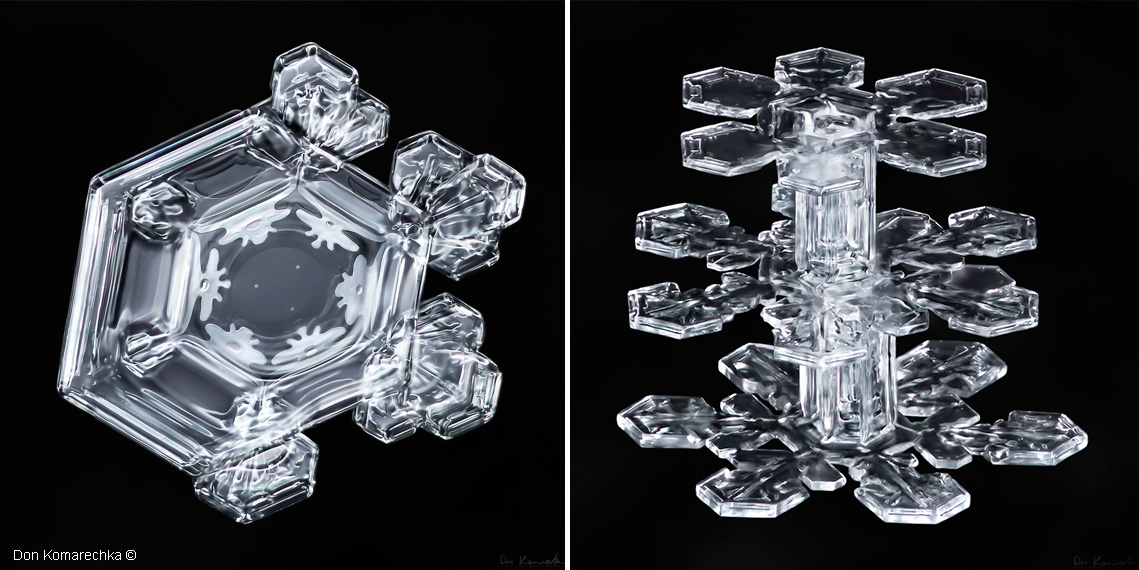
Fundamentally, the process starts very low-tech: a black mitten and a paintbrush. The mitten is the background, providing contrast and a surprising ability to isolate the snowflake details, and the paintbrush is used to clear away just one single freshly fallen crystal. Things get a little more challenging when it comes to the equipment required to fill the frame with a snowflake, however.
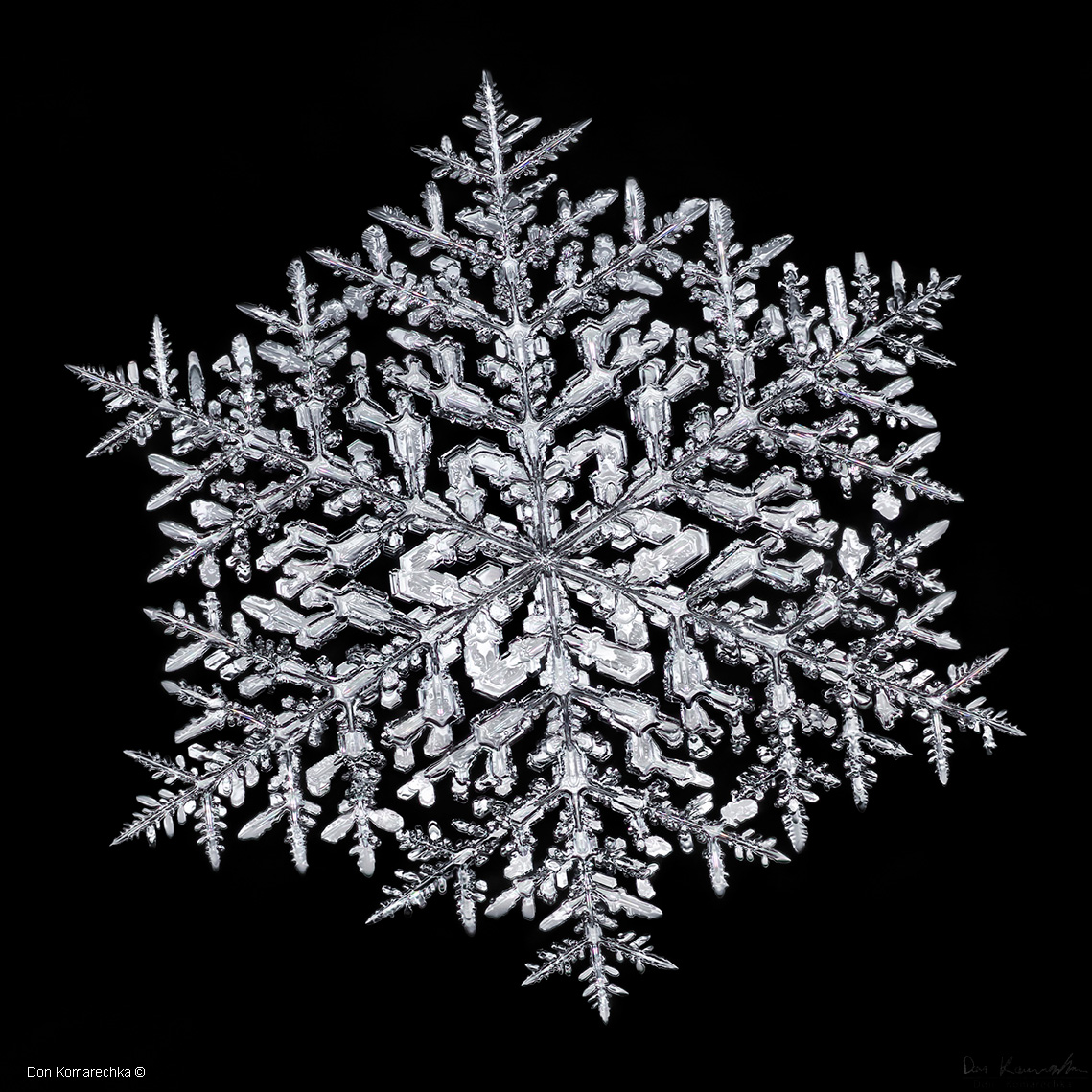
Closeup View of a Snowflake

Photographing snow crystals with a Canon MP-E-65mm Macro lens, several extension tubes and Canon ring flash.

Closeup view showing the front of the lens, black mit and snowflakes

There are many ways to get high magnification, from super-macro/micro lenses to adapting microscope objectives to your camera. My go-to lens is the Canon MP-E 65mm F/2.8 lens which is capable of getting five times more magnification than a typical macro lens. Add extension tubes and additional optics, we can push that to 12:1. All these snowflakes are lit with a ring flash and photographed on a slight angle that allows the light from the flash to reflect off the surface of the crystal like glare on a window, revealing every surface detail.

Photographing a snowflake on an angle introduces its own set of problems, however. You’re only able to get a tiny sliver of focus cutting across the crystal. This means that multiple images are required for “focus stacking”, and the average snowflake image produced with this method requires 40 separate images. Working fast and finding the right angle quickly also means that the images are shot handheld, so there is no certainty if shooting 40 images gets you all the slices of focus you need. Multiple passes over the subject and between 200-300 frames are typically gathered over a two-minute shoot.
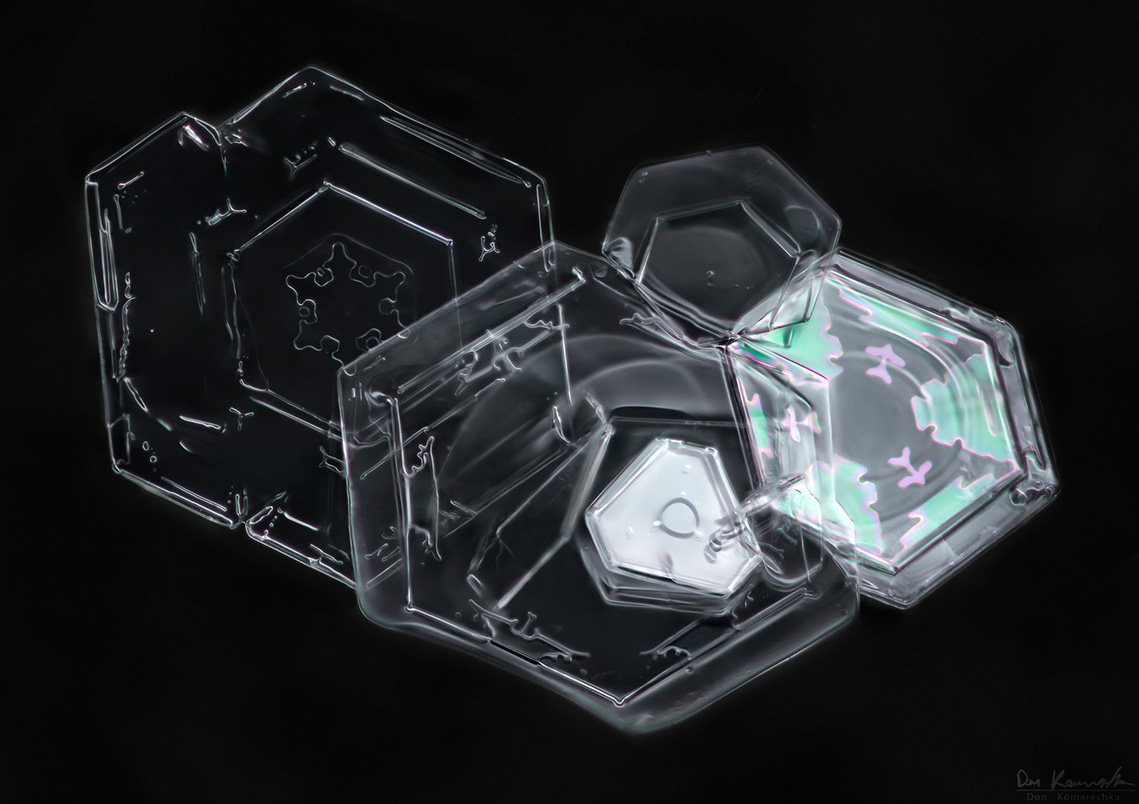
If all that sounds difficult, it is. However, even just a single frame of a snowflake at the right angle can prove magical, and once you get a clear image of these fascinating natural sculptures, you’ll be addicted to it. For me, it not only makes the world a more beautiful place, it also makes winter much more tolerable.
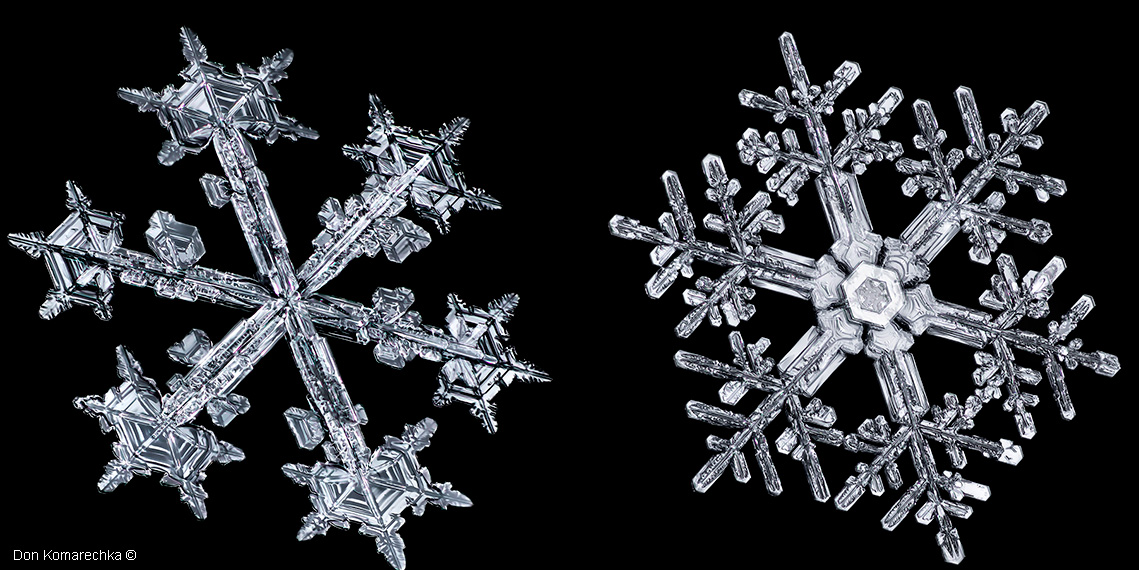
Snow crystals
Sky Crystals - The Book

Sky Crystals Book Cover - Below are some sample pages from the book



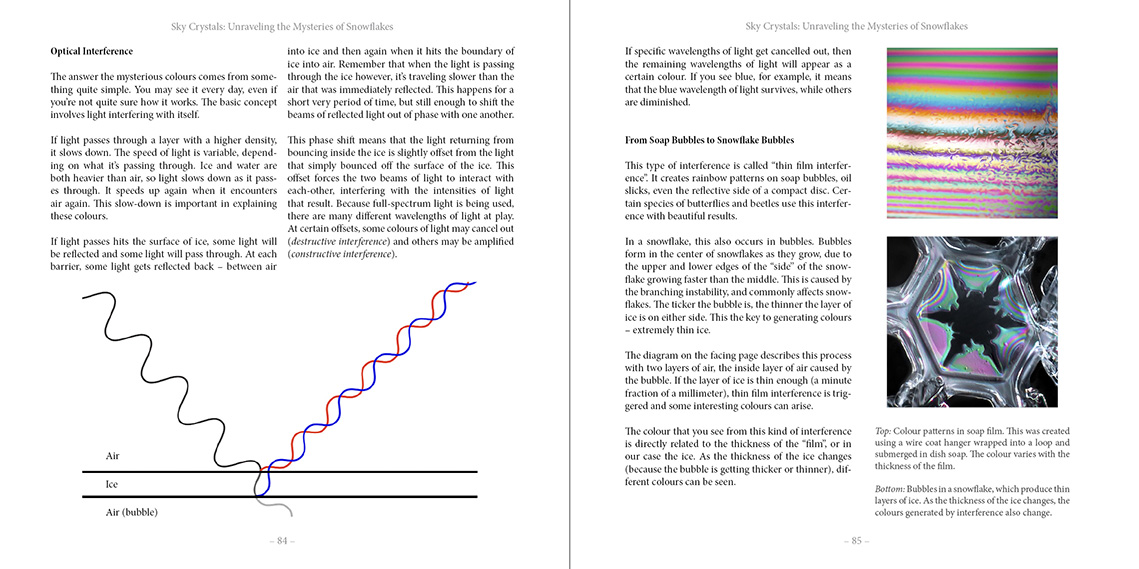
Sky Crystals details all the scientific knowledge that describe how a snowflake grows, as well as the most comprehensive photographic tutorial you can imagine from equipment, techniques, and a step-by-step post-processing tutorial. Available as a 304-page hardcover or eBook, it was originally a successful crowd-funding project and nearly all of the original print run has been sold.
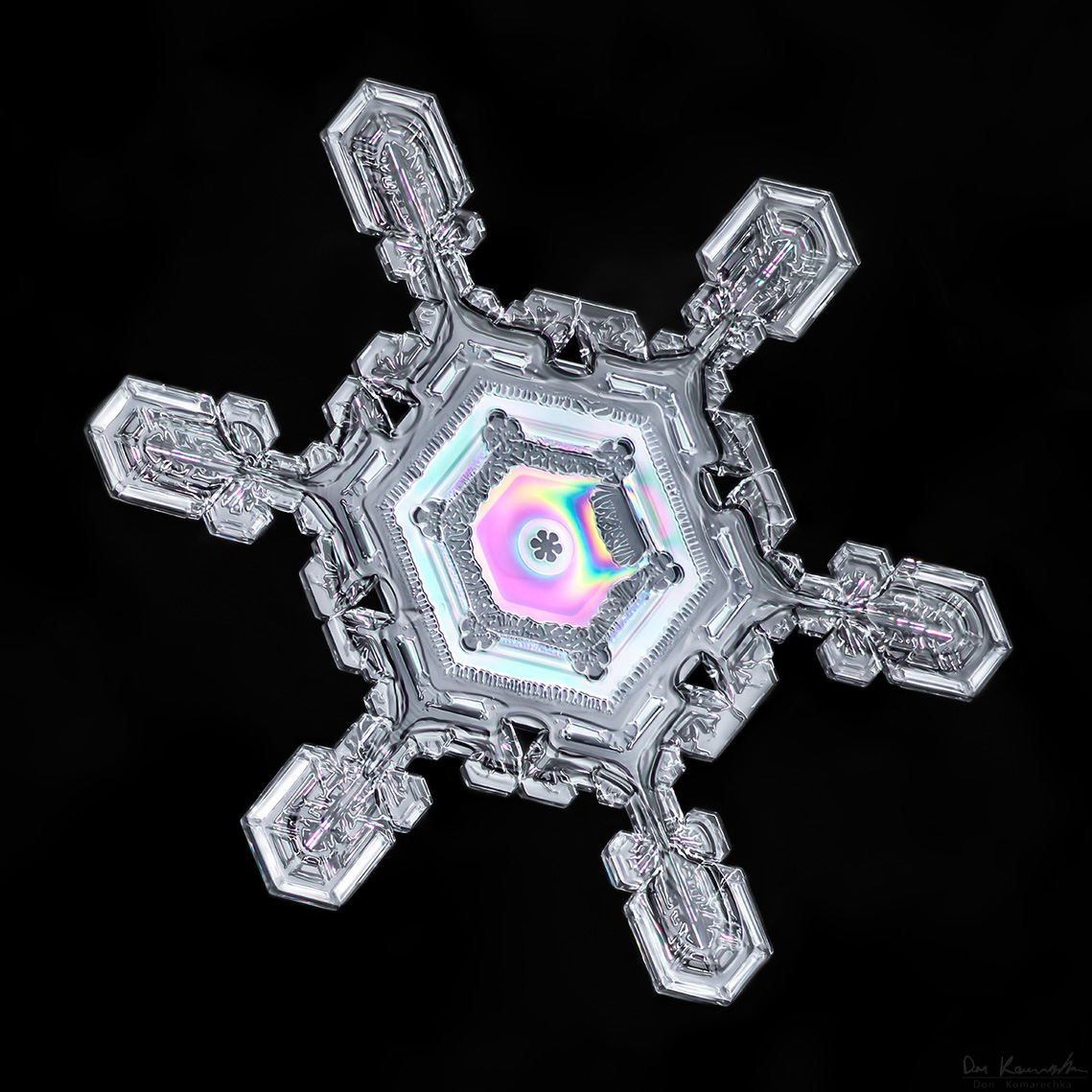
Wind swept Rainbow in snow crystal
Take a look at the 304 page hardcover book for more information. You’ll find over 100 pages dedicated to the photographic and editing techniques, and almost equal length spent exploring the science of how snowflakes form. Along with an extensive gallery of images, the book should answer every question you’ve ever had about snowflakes.
Authors Biography & Contact Information

Don Komarechka is an award-winning nature and landscape photographer located in Barrie, Ontario, Canada. Charged with emotion and beauty, Don's photography is backed by a passion for capturing the natural world. Don's photos convey a sense of peaceful wonder, creating curiosity and intrigue in the viewer. While much of his work is done locally, many have a national and world-wide appeal. Don teaches Nature & Landscape Photography, and loves to share his passion for the visual world. "Every photo has a story - the best come from the spectacular capture of ordinary moments."
Email at: don@komarechka.com
Web site: https://skycrystals.ca/
Facebook
Click on the buttons below and share this site with your friends